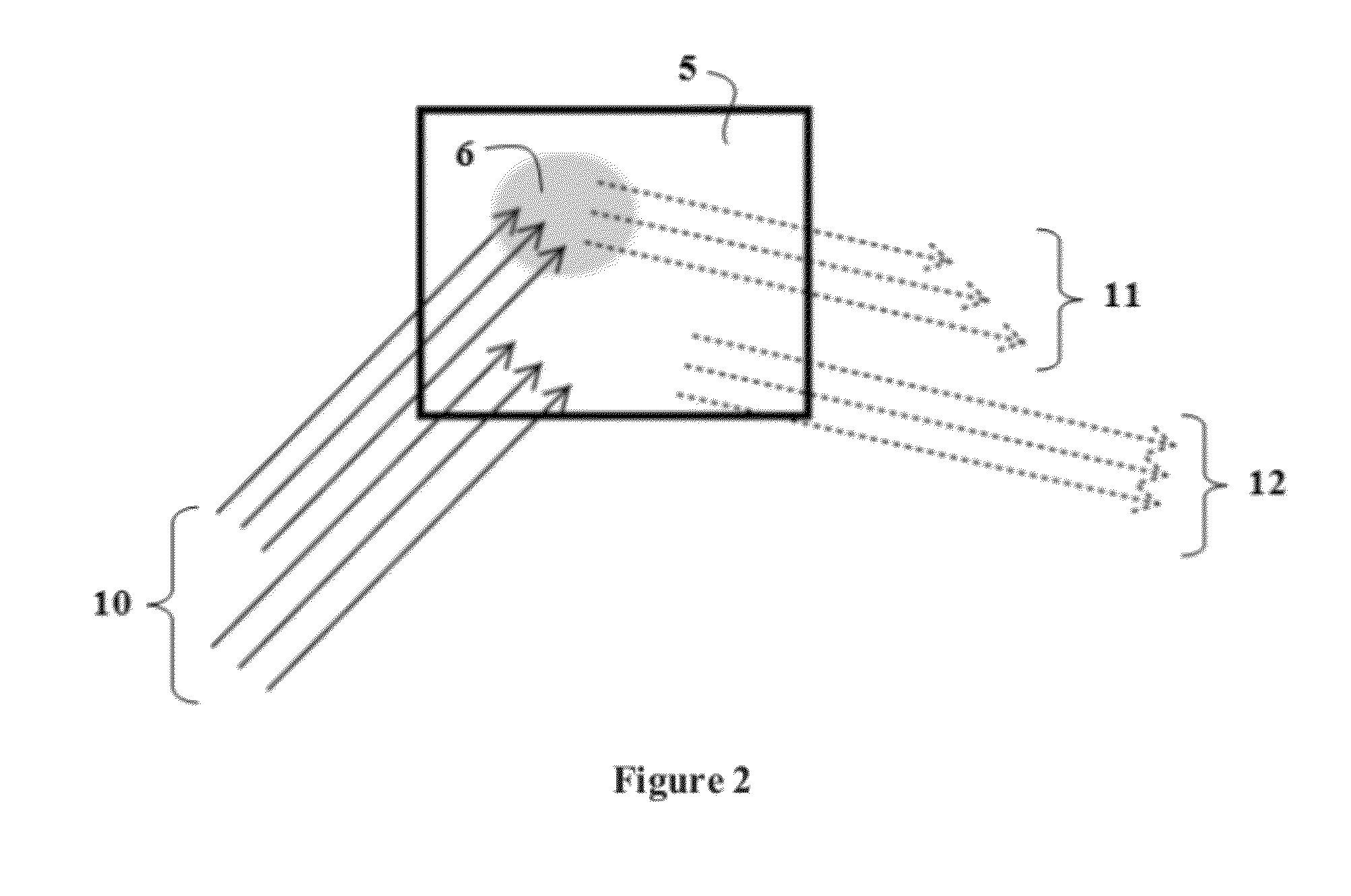Method for Identifying Materials Using Dielectric Properties through Active Millimeter Wave Illumination
- Summary
- Abstract
- Description
- Claims
- Application Information
AI Technical Summary
Benefits of technology
Problems solved by technology
Method used
Image
Examples
Embodiment Construction
[0014]One embodiment of the described invention comprises a millimeter wave energy source capable of emitting (an emitter) at least three different discrete bands of millimeter wave radiation utilizing a frequency range between 5 and 500 GHz, used to illuminate a target zone. Frequencies higher than 500 GHz suffer from high specular reflection from cloth, and make penetration at other than normal angles difficult. A detector, capable of measuring the intensity of reflection received from the target zone is part of the embodiment. A computer or other computational means for receiving and determining the measurement of reflection intensity received from illuminated objects within the target zone that is capable of optimization of the dielectric constant using geometric optics modeling. A database comprising the dielectric properties of materials which is used by the computer means to compare / identify the composition of the target anomaly. Such comparison may be made by computer algori...
PUM
 Login to View More
Login to View More Abstract
Description
Claims
Application Information
 Login to View More
Login to View More - R&D
- Intellectual Property
- Life Sciences
- Materials
- Tech Scout
- Unparalleled Data Quality
- Higher Quality Content
- 60% Fewer Hallucinations
Browse by: Latest US Patents, China's latest patents, Technical Efficacy Thesaurus, Application Domain, Technology Topic, Popular Technical Reports.
© 2025 PatSnap. All rights reserved.Legal|Privacy policy|Modern Slavery Act Transparency Statement|Sitemap|About US| Contact US: help@patsnap.com



